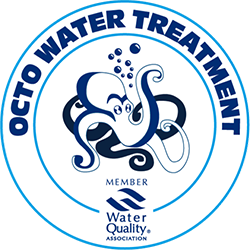Ensuring a reliable supply of clean water is essential for any yachting experience. Bunkering water on a yacht is a critical procedure that requires meticulous attention to ensure the safety and quality of the water being transferred onboard. This process involves sourcing water from docks, marinas, or trucks and efficiently transferring it into the yacht’s main tanks. In this article, we will explore the essential aspects of safe bunkering, including best practices, common issues, and the importance of using the right equipment.
Understanding Safe Bunkering
Safe bunkering is more than just transferring water; it’s about ensuring that the water transferred is safe, contaminant-free, and delivered under the right conditions to prevent any risk to the yacht’s crew, systems, and operations. Whether you are docked at a marina, receiving water from a delivery truck, or sourcing it directly from a shore supply, following established procedures is crucial.
Preparation for Bunkering
- Assess Water Quality: Before starting the bunkering process, it’s important to test the water quality from the source. Ensuring that the water is free from contaminants and suitable for consumption is a vital first step.
- Inspect Equipment: Check all hoses, connections, and fittings for any signs of wear or damage. Using substandard or faulty equipment can lead to contamination or leaks.
Selecting the Right Bunkering Hoses
- Material and Quality: Bunkering hoses should be made of food-grade materials that do not leach chemicals into the water. High-quality hoses designed specifically for potable water transfer are essential.
- Regular Maintenance: Regularly inspect and clean hoses to prevent the buildup of bacteria or other contaminants. Replace hoses that show signs of deterioration.
At Octo Marine, we recommend our High-Quality Bunkering Hoses that are designed to prevent any leaks or ruptures, which are common issues with inferior quality products. Using the right hoses not only ensures the safety of the water but also extends the durability and efficiency of the bunkering equipment.
The Bunkering Process
- Secure Connections: Ensure that all connections between the water source and the yacht’s intake are secure and leak-free. Use proper fittings and clamps to prevent accidental disconnections.
- Monitor Flow Rate: Control the flow rate to prevent overfilling and spills. Using a flow meter can help manage the transfer process more accurately.
- Ventilation: Properly ventilate the tank during bunkering to allow air to escape and prevent pressure buildup, which can cause tank damage.
Post-Bunkering Checks
- System Flushing: After bunkering, flush the yacht’s water system to remove any residual contaminants that may have entered during the transfer process.
- Regular Testing: Periodically test the water in the tanks to ensure it remains clean and safe for use.

Common Issues with using Poor Quality Bunkering Hoses
Using the wrong or poor quality bunkering hoses can lead to several issues that compromise both the water quality and the yacht’s systems:
- Contamination: Non-food-grade hoses can leach harmful chemicals into the water, making it unsafe for consumption and use.
- Bacterial Growth: Poorly maintained hoses can harbor bacteria, leading to waterborne illnesses.
- Leaks and Spills: Substandard hoses are prone to leaks and bursts, resulting in water loss and potential damage to the yacht’s infrastructure.
- System Damage: Incompatible materials can react with the yacht’s plumbing system, causing corrosion and long-term damage.
To avoid these problems, always choose certified and high-quality bunkering hoses and conduct regular maintenance checks. At Octo Marine, our hoses meet all industry standards and are designed to offer superior performance and reliability.
ISO Standards in Safe Bunkering
Compliance with ISO standards, such as ISO 19458:2006, is essential for ensuring water safety and quality during the bunkering process. These standards provide guidelines for water sampling for various purposes, including testing for bacterial, mineral, and physiochemical contaminants. Adhering to these standards helps in maintaining high marine water quality and supports yacht water management protocols.
Invest In Quality
Safe bunkering is a fundamental process for every yacht, ensuring that the water onboard is safe and of the highest quality. By adhering to best practices, using the right equipment, and conducting regular maintenance, yachts can avoid common bunkering pitfalls and maintain a pristine water supply. Remember, investing in high-quality bunkering hoses and adhering to safety standards is crucial for the longevity of your yacht and the health of everyone onboard.
For more information on bunkering solutions and water safety products, get in touch. We offer a range of products designed to enhance your yacht’s water safety and quality, ensuring a seamless and secure bunkering experience.






